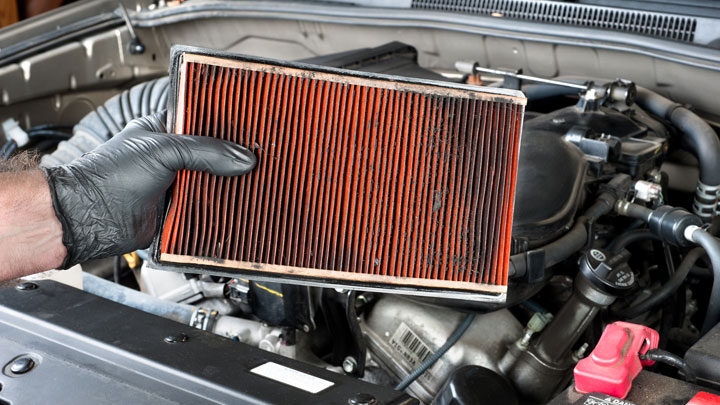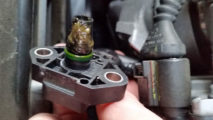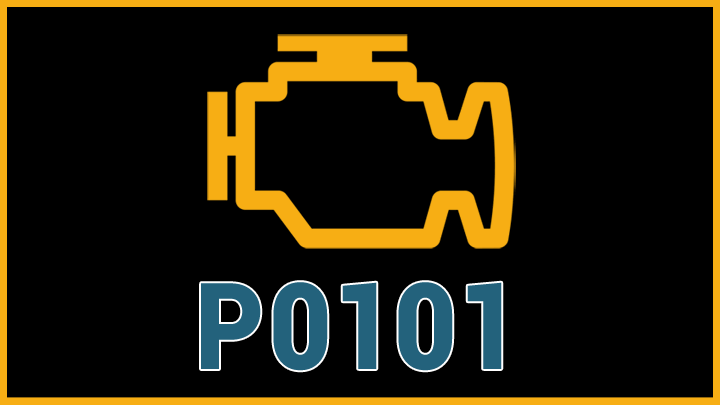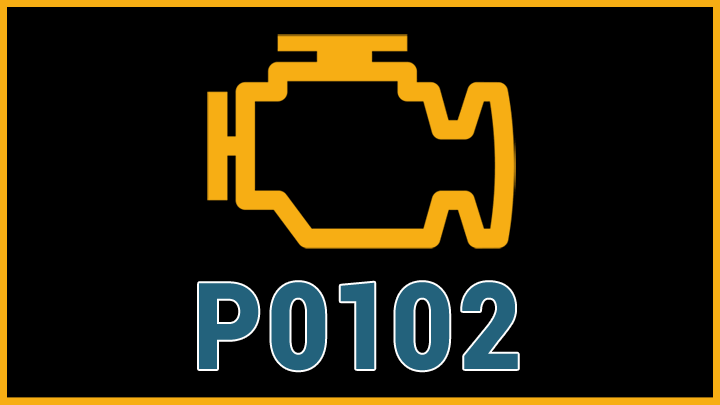Last Updated on August 2, 2022
Some vehicles have an air intake temperature (IAT) sensor either mounted within their air filter duct hosing or built into their mass airflow sensor (MAF).
This sensor measures intake air temperature using a thermistor. Thermistors measure temperature based on electrical resistance, with a drop in resistance equating to a rise in temperature. A P0113 code indicates that there has been a drop in resistance.
What Does Code P0113 Mean?
Your car’s powertrain control module (PCM) sends a steady 5-volt current to your IAT sensor to monitor air intake temperature. As mentioned, a rise in temperature creates a drop in resistance in the thermistor, while a cooler temperature will have a higher resistance.
The level of resistance in the thermistor as a result of temperature will determine the voltage of the feedback the PCM receives. If the temperature of the air intake is normal, the thermistor will have some resistance, and the feedback voltage to the PCM will be below 5 volts.
If the feedback voltage is at 5 volts, that tells the PCM that there is low resistance, meaning the air intake is too hot, and code P0113 will be triggered.
Related: P0110 Code
Symptoms of Code P0113

You can easily spot the symptoms of a P0113 code. Some of the most recurrent symptoms leading to error code P0113 include:
#1 – Problematic Starts in Cold Temperatures
If there is a problem in the air intake system, causing it to overheat, the car will be unable to balance its air-to-fuel ratio. This comprises the efficiency of the ignition system. Consequently, it may take multiple attempts to start the engine.
#2 – Unnatural Fuel Consumption
You can confirm your suspicions about error code P0113 by examining the spark plugs. If the fuel usage is on the heavier side (running rich), then they will be covered with a blackish coating smelling of fuel.
Over time, this coating will make it harder for your car to start and efficiently combust the air-fuel mix.
If you suspect the fuel intake is low, then the spark plugs will be unusually clean. You can figure it out by paying attention to engine pick up. Low fuel consumption will result in slower pickup power.
#3 – Engine Misfires
Misfires happen when the engine is unable to complete the entire combustion cycle, meaning it will skip the intake, compression, combustion and power stroke, and/or exhaust steps.
Causes of Code P0113

Error code P0113 doesn’t necessarily mean that the air intake is actually too hot. This code can be triggered for numerous reasons, including:
- Problematic Intake Air Temperature Sensor: Your IAT sensor could need cleaned, adjusted, or replaced. A faulty IAT sensor is the most common cause of a P0113 code.
- Dirty Air Filter: A dirty air filter is the second most common cause of error code P0113. If your air filter is dirty enough to hinder airflow, your air intake system has to work harder or may receive inadequate airflow. Both situations will result in a higher air intake temperature.
- Faulty MAF Sensor: If your MAF sensor malfunctions, your car may try to take in more air than it needs, causing the air intake system to overheat.
- Issues with Wiring: There are numerous wiring issues e.g., corroded terminals, broken wires, short circuits, etc. which can lead to a P0113 code.
- Check your PCM: A faulty PCM is the least common cause of error code P0113 and the most expensive to fix.
Is Code P0113 Serious?
Code P0113 itself is categorized as a common issue. The two most common causes of this code are inexpensive to fix and pose no immediate danger to you or your vehicle. However, the problem can become more serious if it isn’t addressed.
If the temperature in your air intake is actually too hot or your MAF sensor or PCM is faulty, the air-to-fuel ratio in your vehicle will be affected, which can end up causing damage to other engine parts.
As a result, while code P0113 is not serious enough to warrant immediate attention, timely attention is important.
How to Fix Code P0113

Your first step is to take a temperature reading to find out if the sensor is bad, or if the air intake is really too hot.
- Allow your vehicle to run until the engine is warm.
- Use an infrared thermometer to check the temperature of the air intake and your engine coolant.
If they are the same temperature or the air intake temperature is higher, your sensor is not bad. If the air intake temperature is lower than the temperature of your coolant, check the wiring to the IAT sensor, clean the connections, clear the error code, and drive the vehicle. If the code reappears, change the IAT sensor.
If your sensor is good, the next step is to check your air filter. If it appears dirty, change it, clear the error code, and drive the vehicle. If your air filter was clean or the code reappears after changing the filter, the MAF sensor or PCM may need to be replaced.





Where is it located on a 2006 F150 ford with 6 cylinder
I changed intake filter, and the problem still exists.
The intake air temperature (IAT) sensor is not a filter. Are you sure you changed the correct part?
If the IAT sensor is not the root cause, you may have an electrical issue somewhere, such as a corroded connector.
I changed map sensor..and the problem still exist.
Did you try cleaning or replacing your IAT sensor?